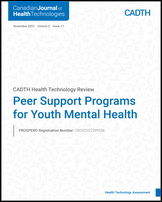|
Beck’s Hopelessness Scale (brief version)
60
| A 4-item questionnaire to evaluate hopelessness, with scores ranging from 4 to 24. Higher scores indicate increased hopelessness. |
|
Center for Epidemiologic Studies Short- Depression Scale 10
66
,
67
| CES-D-10 is a 10 item questionnaire, each with Likert type response options, to assess symptoms of depression. It is a shorter version of CES-D It includes questions on somatic symptoms, depressed affect, and positive affect, which are scored from 0 (rarely or none of the time) to 3 (all of the time), over the past week. Total scores range from 0 to 30, with higher scores indicating increased severity of symptoms. |
|
Center for Epidemiologic Studies–Depression Scale
64
| CES-D is a 20-item scale to assess symptoms of depression and to identify at-risk individuals for depression. Each item is rated on a 4-point Likert scale ranging from 0 (rarely or none of the time) to 3 (all of the time). Total scores range from 0 to 60, with higher scores indicating increased severity of symptoms.65 |
|
Empowerment Scale
58
| Empowerment scale is a 28-item scale to measure empowerment among consumers of mental health services. It includes domains such as Self-esteem, Power-Powerlessness, Community Activism and Autonomy, Optimism and Control over the Future, and Righteous Anger. Each item is scored on a 4 point Likert scale (strongly agree to strongly disagree). Higher scores indicate stronger empowerment.91 Note: The Self-esteem (9 items) and the Optimism (4 items) subscales of Empowerment scales were used in 1 of the trials50 included in the Clinical Review to assess the outcome of empowerment. A mean score was calculated ranging from 1 to 4. |
|
Generalized Anxiety Disorder 7-Item scale
62
,
63
| A 7-item scale to assess to symptoms of anxiety. Each item is rated from 0 (not at all) to 3 (nearly every day) on how the participants have felt over the past 2 weeks. The total score ranges from 0 to 21, with higher scores indicating increased severity of symptoms.63 |
|
General Help-Seeking Questionnaire
59
| This questionnaire is used to assess help-seeking behaviour of participants from various sources (e.g., brothers/sisters, doctor, priest/pastor/minister/religious leader, phone helpline) regarding mental health concerns. Each item is rated using a 7-point Likert ranging from “extremely unlikely” to “extremely likely.”59 Note: In 1 included trial50 an average of scores from items related to family/friends and professionals was reported. Higher scores indicate an increased likelihood for seeking help.50 |
|
Internalized Stigma of Mental Illness
54
(10-item version)
| ISMI92 is a 29-item questionnaire used to assess internalized stigma across domains such as Alienation, Discrimination Experience, Social Withdrawal, Stereotype Endorsement, and Stigma Resistance. A shorter 10-item version of ISMI54 is a validated outcome measure and covers all the domains in the 29-item ISMI. Each item is rated on a 4-point Likert: strongly disagree (1) to strongly agree (4). Overall score ranges from 1 to 4, with higher scores indicating increase levels of internalized stigma.54 |
|
KIDSCREEN 1056
| A validated 10-item questionnaire to measure health-related quality of life among children and adolescents. Each item has 9 response options ranging from “not at all “(1) to “always” (9) . Total score ranges from 10 to 50 with higher scores indicating better health-related quality of life.56,57 |
|
Link’s Stigma Coping Orientation Scales
55
| A subscale of Link’s Stigma Scales, the stigma-coping orientation measure domains such as secrecy, withdrawal, challenging, distancing, and educating. Each item scores from 1 (strongly disagree) to 4 (strongly agree). Among these, items related to secrecy (5 items) and withdrawal (7 items) were used in 1 of the included trials.50 Higher mean scores (range 1 to 6) indicate more secrecy or withdrawal.50 |
|
Self-Identified Stage of Recovery Scale
61
| This self-reported scale measures stage of recovery across the domains of stage of recovery and the recovery process. Stage of recovery is assessed using 1 statement and the Recovery process is assessed using 4 items, rated on a 6-point scale from 1 (Disagree Strongly) to 6 (Agree Strongly). Higher overall scores (range 4 to 24) indicate a better recovery process.61 |
|
Self-Stigma of Mental Illness Scale–Short Form
53
| A self-reported measure to assess self-stigma, and consists of subscales such as awareness, agreement, application, and harm. Each subscale has 5 items, which is rated from 1 to 9 (9 being strongly agree). The overall score for each subscale ranges from 5 to 45, with higher scores indicating more self-stigma.53 Note: In the included trial by Conley et al.,39,40 each subscale scores were reported as ranging from 2 to 5. This is likely the mean score of the 5 items in each of the subscales. |
|
Stigma Stress Scale
93
,
94
| Self-reported 8-item scale in which 4 items are about stigma as a harmful stressor and 4 items about perceived resources to cope with stigma-related harm. Each item is rated from 1 to 7, 7 being more harm or more coping resources. Stigma stress score (range –6 to 6) is calculated by subtracting mean score of perceived resources from mean score of harm, with higher score indicating increased stress related stigma.93,94 |
